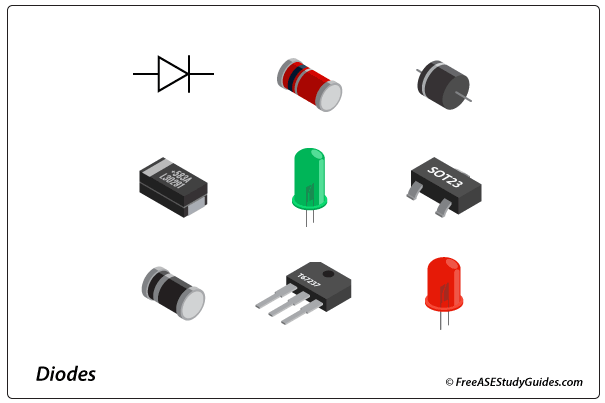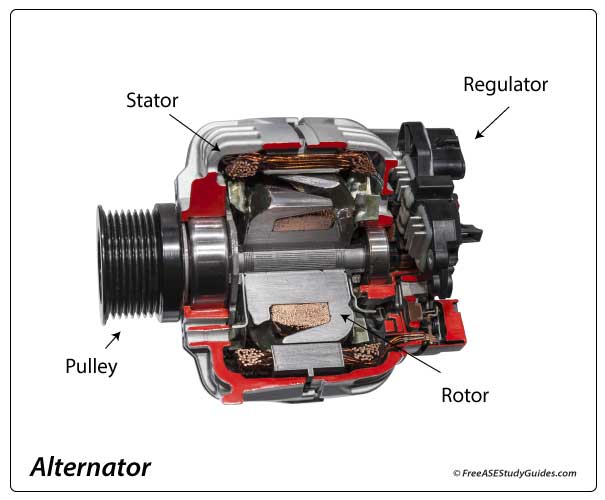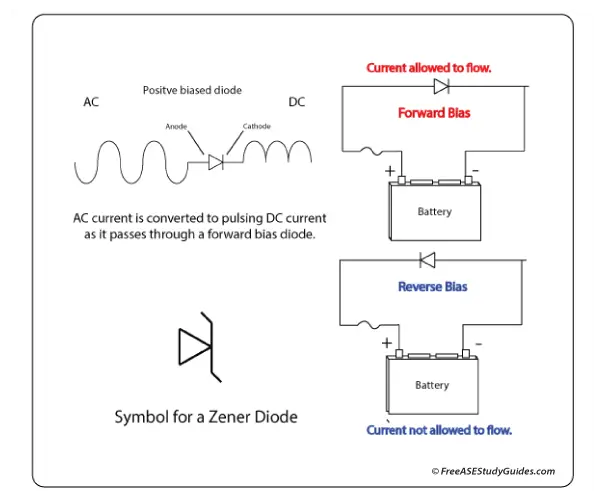Diodes

Diodes are simple semiconductors that allow current to flow only in one direction. This is accomplished by joining one material for the negative side to another different material for the positive side. The negative side of a diode is called the cathode, and the positive side is called the anode.

A diode can be considered a one-way check valve. This is an important characteristic. That’s why diodes are used in automotive alternators to convert AC voltage to DC voltage. When the AC reverses, the diode blocks the negative pulses, only allowing positive pulses.

This converts the AC voltage created by the generator to DC voltage used throughout the automotive electrical system. A rectifier bridge in an alternator consists of six diodes, two for each stator winding. The conversion of AC to DC is known as rectification.

If a diode is placed in a circuit with reverse bias, it acts as an insulator, blocking the flow of electricity. The diode acts as a protective device, protecting sensitive components from voltage surge. When placed in a forward bias direction, with the positive or P-side facing the positive voltage, it acts as a conductor, allowing electricity to flow through the circuit.